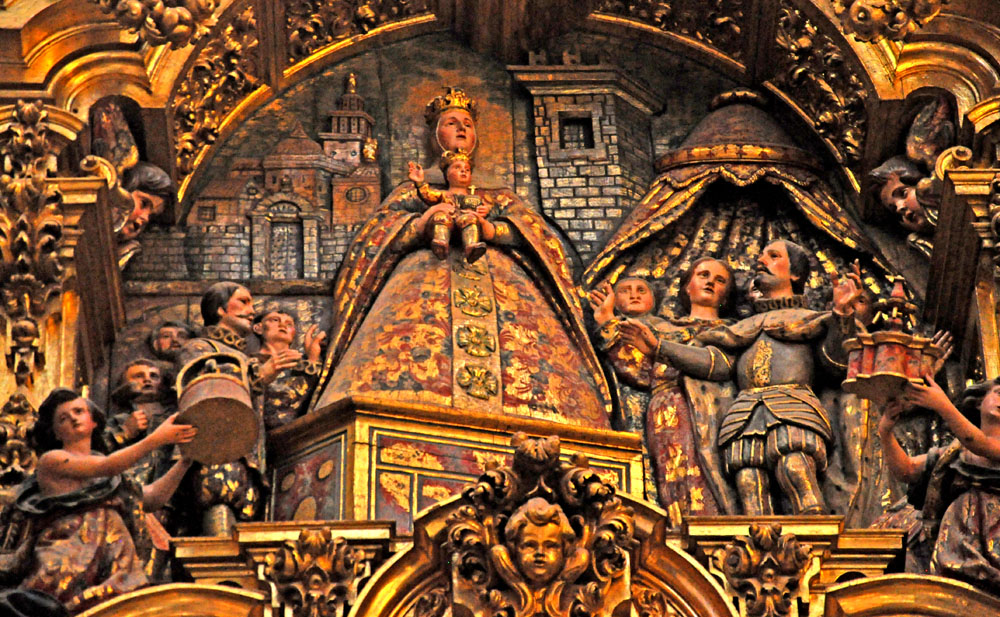PORTRAITS
In the statue at right we see Ferdinand's most common attributes: a sword, a crown, and a mappa mundi A globe representing the Earth, with one horizontal band dividing the upper and lower hemispheres, the upper hemisphere being bisected by a second band. Usually topped by a cross. globe topped by a cross.NARRATIVE IMAGES
The king credited the Virgin Mary with his reconquest of Seville from the Moors, so he gave the city a statue of Mary which came to be known as the Virgin of the Waters.
Prepared in 2013 by Richard Stracke, Emeritus Professor of English, Augusta University. Revised 2018-08-05.

18th century statue (See the description page)
ATTRIBUTES
- A sword, a crown, and a mappa mundi orb
- Sometimes, a cross
MORE IMAGES
- 17th century: In this statue in Pamplona a bare-headed Ferdinand stands on a large mappa mundi, and the cross is displaced to his hand.
- 1698: A seated St. Ferdinand holds a simple globe instead of a mappa mundi.
- Late 19th century: Lucas Valdés, The Apotheosis of St. Ferdinand.
DATES
- Feast day: May 30
- Lived 1198-1252
BIOGRAPHY
-
Acta Sanctorum, May vol. 7, 280-414. (Note the Vita Brevior, 298-304.)
- Also see the survey of Fernando's hagiography in Butler, 426.